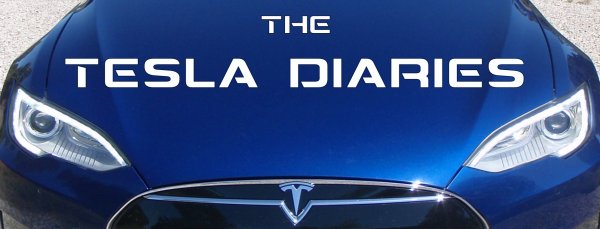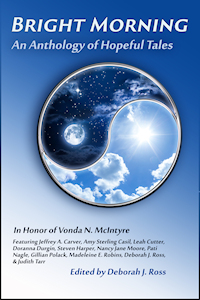
(This post is part of a blog series. In case you haven’t read it, here’s the first post.)
We now got serious about the design studio. We had long discussions about which options we had to have (“D” package, AKA all-wheel drive, because snow; light-colored interior, because sun; Deep Blue Metallic, because duh) and which we could live without (deluxe sound system, power package, special effects lighting).
We looked at the Autopilot option, scratched our heads because we didn’t really understand it, and decided against it. We wanted to be in control of the car, thanks. That’s why we liked manual transmissions.
This turned out to be a bad decision. More on that later.
We saw that Tesla was offering the 85 kilowatt-hour (kWh) battery pack for a mere $5k more than the 70 kWh pack.
>>>MATH ALERT!<<<
85 kWh = about 275 miles of range
70 kWh = about 235 miles of range
Difference = about 40 miles of range
Going up to the 90 kWh pack (about 295 miles of range) would add another $5k to the cost. That’s $5k more for an extra 20 miles of range. We decided to go with the 85.
Why not the 70? Because we wanted to be able to drive into Albuquerque, pick up friends, drive to Santa Fe and party around, then drive our friends home and get back to our own home all on one charge. A range of 235 miles would be cutting it too close for comfort. The 275 mile range would allow a more reasonable safety margin.
This was our first taste of Range Anxiety. More on that later.
By the way, neither the 70 kWh nor the 85 kWh battery pack is available on the Model S now. Ever on the watch for higher efficiency, Tesla is streamlining its options. (The current Model S battery options are 75 kWh, 90 kWh, and 100 kWh. Rumor has it the 90k will soon be phased out. The smaller Model 3 coming out in July 2017 is expected to offer 60 kWh up to 75 kWh batteries.)
As a nod to luxury, and a consolation prize for not getting the really cool but totally frivolous lighting package (light-up door handles!), we added a sunroof.
Bottom line with the options we wanted: $89,000.
We would get a federal tax credit for buying an electric car. That would knock $7,500 off the price. Still, ouch.
We took a hard look at our finances. We had a loan on the Camry, and we had a pickup that was paid off. Selling the truck (sob) would give us enough to pay off the Camry, leaving us with only the Model S to pay for.
I had some inheritance money, earmarked for retirement, but I was willing to put part of it toward a down-payment. I also had a sale coming up for the first book in my most popular novel series. I decided that if that sale generated a certain amount of income, I’d be willing to put the money toward a Tesla, and match the amount from my inheritance. That would bring us up to about half the cost of the Model S. My spouse agreed that if all that fell into place, he would be willing to make the payments on a loan for the balance.
This was not a trivial decision. We had never, ever imagined spending anything near this amount on a car.
But we weren’t just buying a car. We were investing in the future. Part of the money we were spending would go toward the development of the Model 3, that more-affordable car that had first sparked our interest. Part of the money would go toward expanding the network of Tesla Superchargers (high-speed chargers spaced along major roads, designed to facilitate long-distance driving). And as owners of a Model S, we’d be entitled to use those Superchargers for free, forever.*
That’s the thing about buying a Tesla. The cost looks scary. But it’s all up front.
After you buy the car, your fuel costs drop to about a third of what they were. Your maintenance costs are almost nil. No oil changes, no spark plugs, hoses, etc. No muffler, no transmission. The Tesla has very few moving parts.
Keeping our lovely Camry going was costing us about $1200/year in maintenance and another $2000 in fuel costs. So that’s about $3200 per year in additional cost. By 2015, the Camry we’d paid $28k for had now cost us over $34k. (We still own it today, though we’re driving it a lot less. In 2017, the total cost is up to about $38k, coming up on half the cost of our dream Model S.)
Yes, electricity to charge a Tesla costs something, but not nearly as much as gasoline. If you do all your charging at the Supercharger (which is not only inconvenient but lame), it might be free*. Or, to quote Matthew Inman (creator of The Oatmeal) again, your car might be powered by the motherfreakin’ sun. More on that later.
My book promotion went live in October of 2015. It did very well, so that within about ten days, it had generated the target amount I had decided on.
We drank champagne. My spouse got pre-approval for a loan in the amount we had planned for. We put the truck up for sale. We ordered a dedicated charger for our garage, and had it installed. (This wasn’t strictly necessary; you can charge a Tesla using its included cable and a dryer socket, but a dedicated Tesla charger is more convenient.)
Then in mid-November, we went online to the Tesla Design Studio, entered our credit card number for the minimum down payment, and clicked the “Place Order” button.
Our lives would never be the same.
*The free-forever deal was discontinued after January 2017, then reinstated for Model S and Model X owners in May 2017, but new car purchasers can only get it by using a referral code from an existing Tesla owner. Tesla has again updated their referral offer! If you use a referral code from an existing Tesla owner, like this one: http://ts.la/pat9663 (good for five referrals, after which it expires) to order a new Model S or Model X, you will be eligible for free Supercharging as long as you own your Tesla. The same code is also good for a 5-year extended limited warranty on a new solar energy system installation. This offer ends April 30, 2018.






